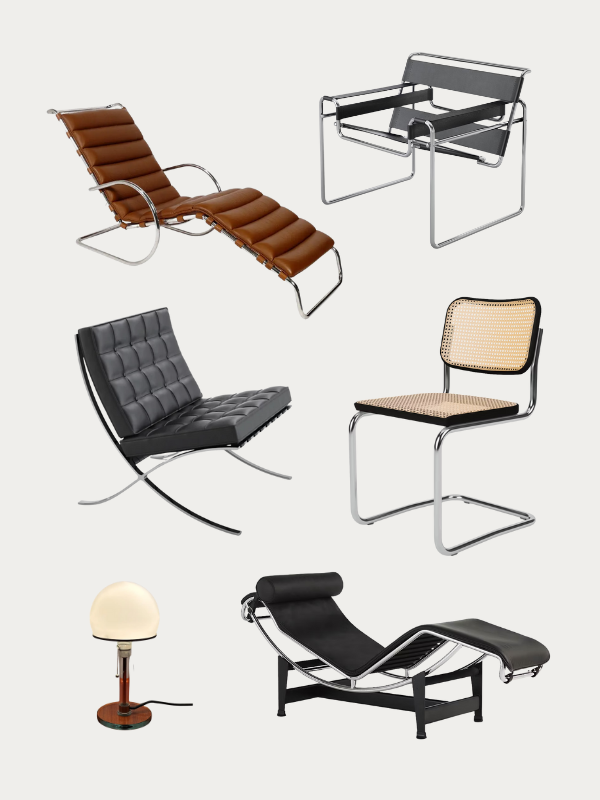When we talk about Bauhaus furniture, the boundaries can blur a bit, just like any movement. Some pieces were created by designers who studied or taught directly at the Bauhaus between 1919 and 1933, like Marcel Breuer or Josef Albers. Others, while not made within the school itself, embody the same ethos of minimalism, industrial materials, and function-driven form. Designers like Ludwig Mies van der Rohe, Le Corbusier, and Eileen Gray were not always “Bauhaus” in the strictest sense, but their works are often grouped under the Bauhaus umbrella because they share its spirit of radical simplicity and timeless modernism.
This mix is ideal for transitional interiors. The clean lines of Bauhaus originals blend seamlessly with the refinement that Bauhaus-inspired modernist icons contributed to the movement. Below are ten pieces that capture this synergy.
A Bit About the Bauhaus Movement

Before we celebrate ten iconic pieces of Bauhaus furniture, let’s take a quick look back in time at what made this movement so unique, influential, and enduring. Founded by Walter Gropius in Weimar in 1919, the Bauhaus brought together architects, artists, and craftsmen who believed that design should serve everyday life.
The Bauhaus Furniture Group
Bauhaus furniture group designers Marcel Breuer, Josef Albers, and Wilhelm Wagenfeld were among those who pushed the boundaries of materials like tubular steel, plywood, and glass, finding new ways to build furniture that was simple, functional, and elegant. Later figures like Mies van der Rohe refined these ideas into works that balanced industrial precision with timeless proportion.
Their collective output reshaped modern interiors and laid the groundwork for designs that remain as relevant today as they were a century ago.
10 Iconic Bauhaus Furniture Pieces We Love for Transitional Interiors
The Wassily Chair by Marcel Breuer
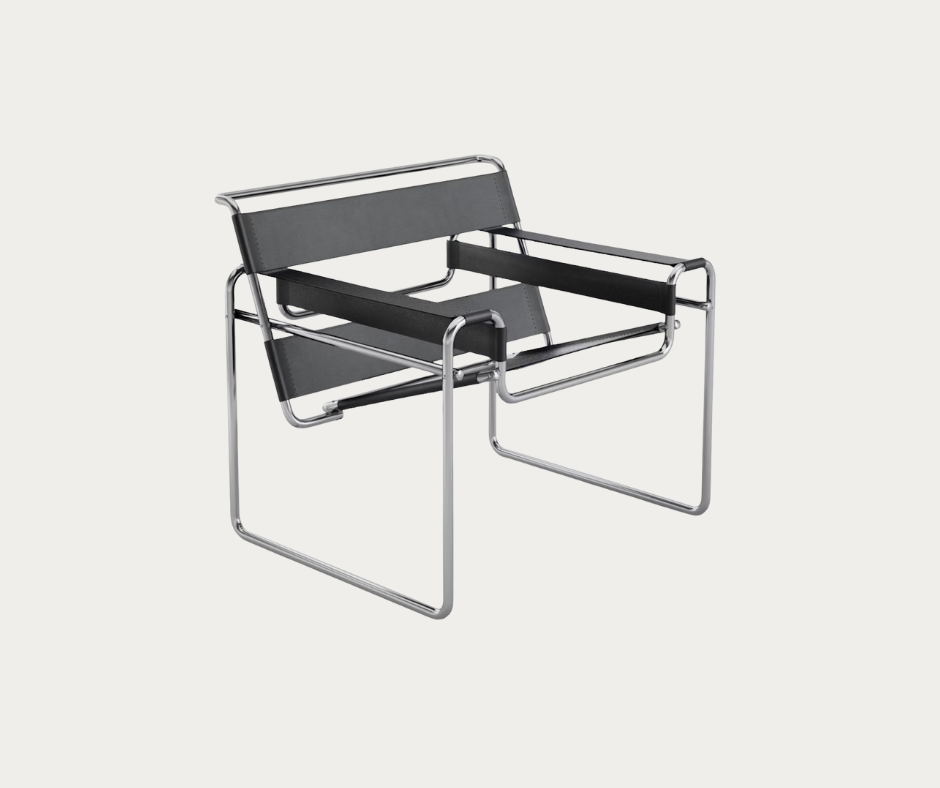
Breuer designed this chair while teaching at the Bauhaus in Dessau, where he was inspired by the handlebars of his bicycle. It was revolutionary because Wassily opted for bent tubular steel, which was typically associated with bicycles and industry; it was hardly ever seen in domestic furniture.
The leather straps keep it lightweight and visually open, which is why it doesn’t overwhelm a room. In a transitional setting, it functions as a sculptural accent piece that pairs well with both traditional soft finishings and modern art.
The Cesca Chair by Marcel Breuer
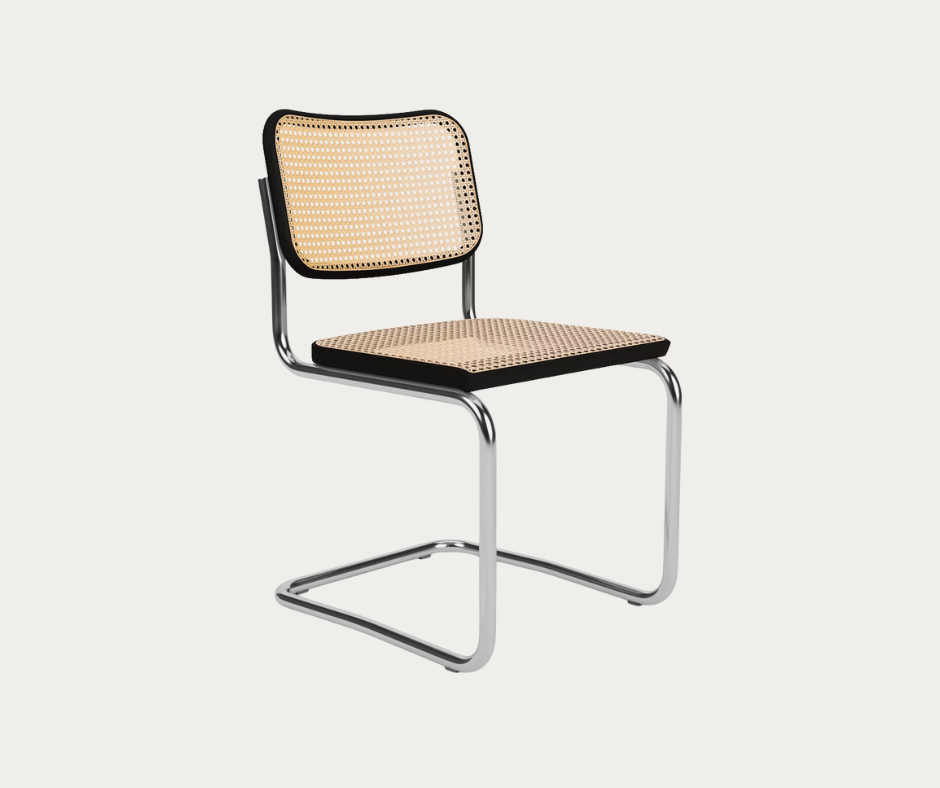
Of course, there is a collection of several Marcel Breuer pieces on this list, as he was one of the most influential figures in the Bauhaus furniture group. Second to The Wassily, The Cesca chair is perhaps best known. It was named after Breuer’s adopted daughter Francesca and combines a tubular steel cantilever frame with traditional caning.
That mix of machine-age steel with a craft technique dating back centuries captures the Bauhaus ideal of merging industry with craft. Transitional interiors benefit from the duality of this style: the steel keeps things crisp, while the cane adds warmth and texture that complements more traditional materials like wood and linen.
The MT8 Table Lamp by Wilhelm Wagenfeld
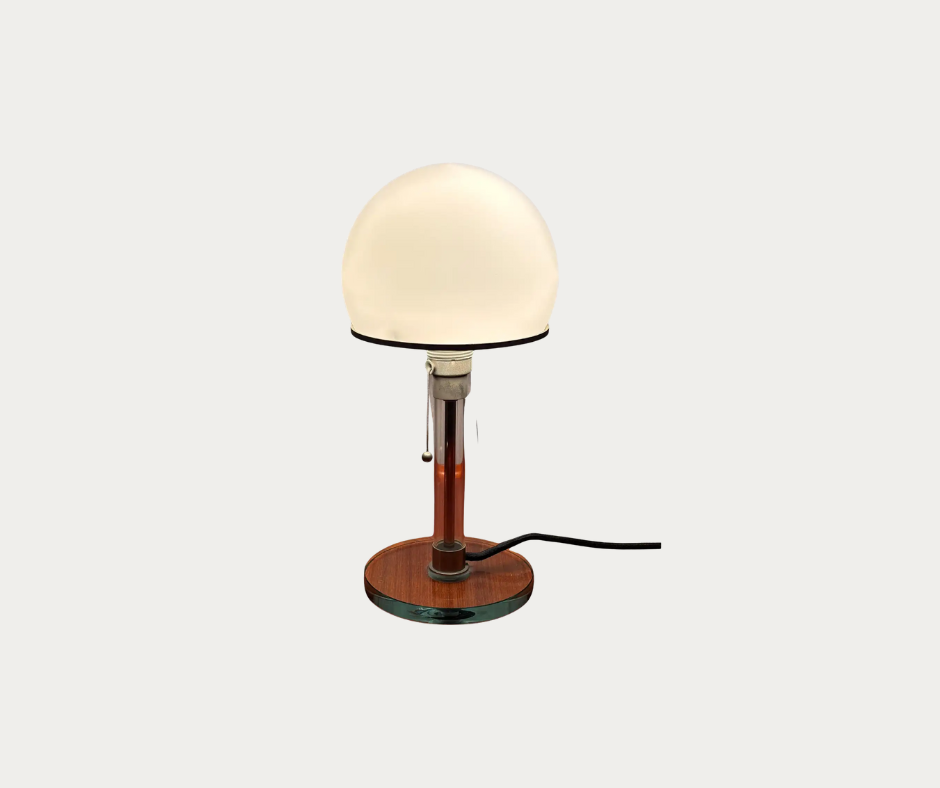
Wilhelm Wagenfeld was one of the Bauhaus’s most successful students, later nicknamed the “Bauhaus Silversmith” for his mastery of metalwork and industrial design. He enrolled at the Bauhaus in 1923, where he studied under László Moholy-Nagy, and quickly became known for applying the school’s ideals of functionality and clarity to everyday objects.

His most famous (and arguably most beautiful) design is the MT8 Table Lamp, which Wagenfeld created in 1924 alongside Carl Jakob Jucker. Sometimes called the “Bauhaus lamp,” it was designed by Wagenfeld as a student project under László Moholy-Nagy. With its glass base, glass dome, and minimal metal stem, the lamp stripped away ornament to leave only pure form.
What makes it so adaptable today is its honesty: glass, light, and steel. In transitional interiors, it works on a writing desk or side table.
The Bauhaus Nesting Tables by Josef Albers

If you are familiar with Josef Albers’ Homage to the Square paintings (one of which is pictured above), you will be entirely unsurprised by his nesting tables, which echo his fine art. Albers designed this set of four tables in painted wood and glass during his tenure at the Bauhaus.
They are simple rectangles in primary colors, intended to be modular and stackable. Thy are charmingly practical and can be used together as a coffee table or pulled apart as side tables. In transitional rooms, the bright colors pack a modern punch while their clean forms allow them to sit comfortably alongside more traditional upholstered pieces.
The F51 Armchair by Walter Gropius
Created for the Bauhaus director’s office, the F51 is all about geometry: cantilevered armrests extend horizontally from the backrest, forming a strict cubic outline. Unlike overstuffed club chairs of the time, Gropius pared the form down to essentials while keeping it upholstered for comfort. In transitional interiors, this chair brings weight. When upholstered in wool or velvet, it bridges modern rigor with the coziness we love (and need).
The Barcelona Chair by Mies van der Rohe & Lilly Reich
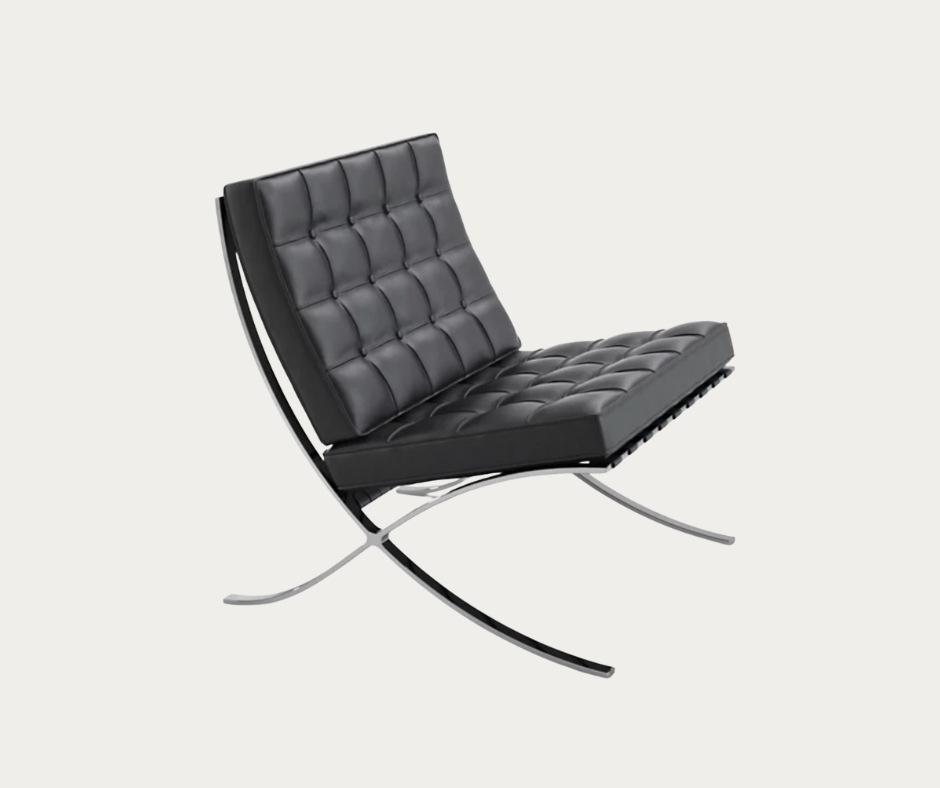
Designed for the German Pavilion at the 1929 Barcelona International Exposition, this chair was created to seat Spanish royalty. Working with designer Lilly Reich, Mies van der Rohe took inspiration from the form of the Roman curule chair, which was a symbol of authority in antiquity. The pair also collaborated on the Brno Chair and the MR 10 Weissenhof chair (pictured below).
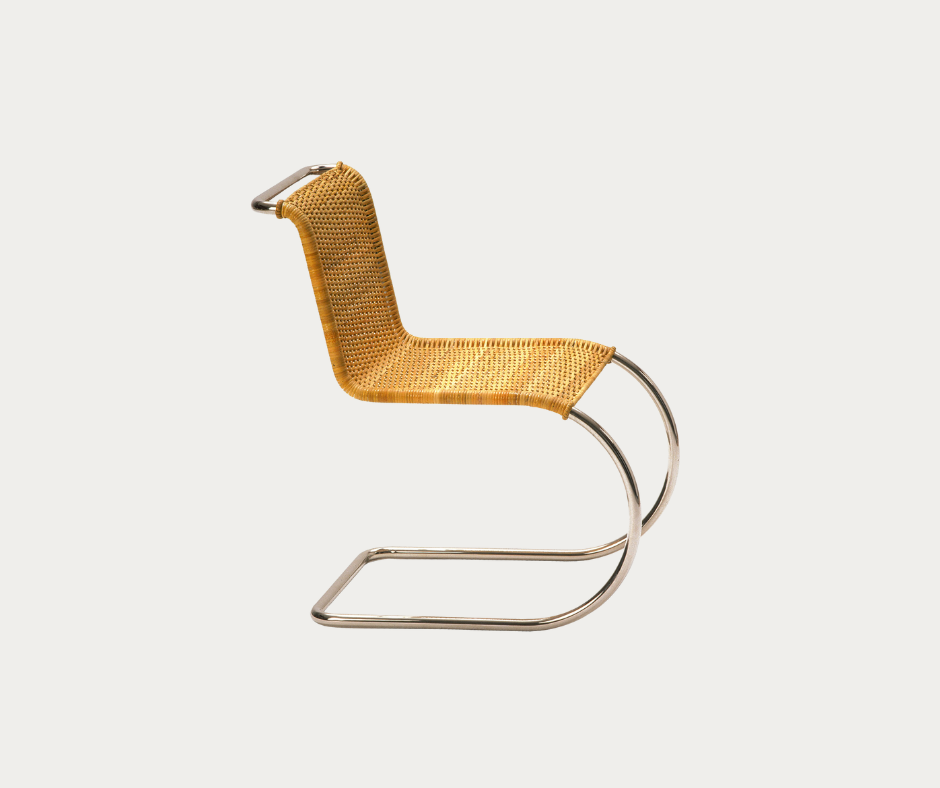
Together, they produced a striking combination of classical reference and modern materials: a polished chrome frame with quilted leather cushions. The Barcelona chair has since become one of the most recognized pieces of modern design. In transitional interiors, it can easily be a focal point as the steel frame keeps it sleek, while the generous cushions give it the weight and comfort needed to balance more traditional elements. However, its profile is low enough to work in very minimalist spaces.
The Brno Chair by Mies van der Rohe & Lilly Reich

In 1930, the pair designed the Brno chair for the Tugendhat House in Brno, Czech Republic, which was one of the most forward-looking residences of its day. The chair reduces its form to an elegant cantilever: a single continuous loop of steel supporting an upholstered seat and back.
Its grace lies in the negative space: there are no decorative flourishes, just refined proportions and honest materials. In transitional interiors, the Brno chair slides in easily. Around a dining table or paired with a desk, it complements both modern and traditional furniture.
The MR Chaise Lounge by Mies van der Rohe
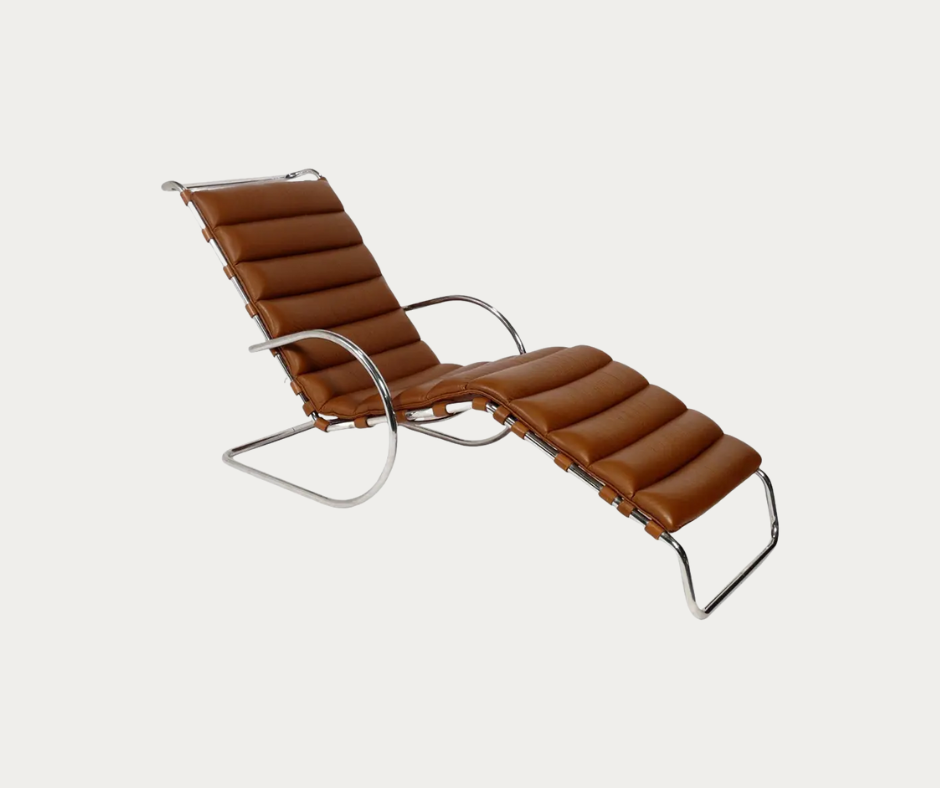
Though the two Bauhaus designers worked together on everything from exhibitions to furniture pieces, the MR Chaise Lounge is typically attributed solely to van der Rohe. Introduced in 1927, it was one of his earliest experiments with tubular steel. Its curved frame and leather straps support a long cushion that encourages a gentle recline. At the time, it stood in stark contrast to the stiff formality of traditional lounges. Today, it is still for sale through KnollStudio, which now manufactures a wide range of International Style, Bauhaus, and Mid-Century Modern furniture.
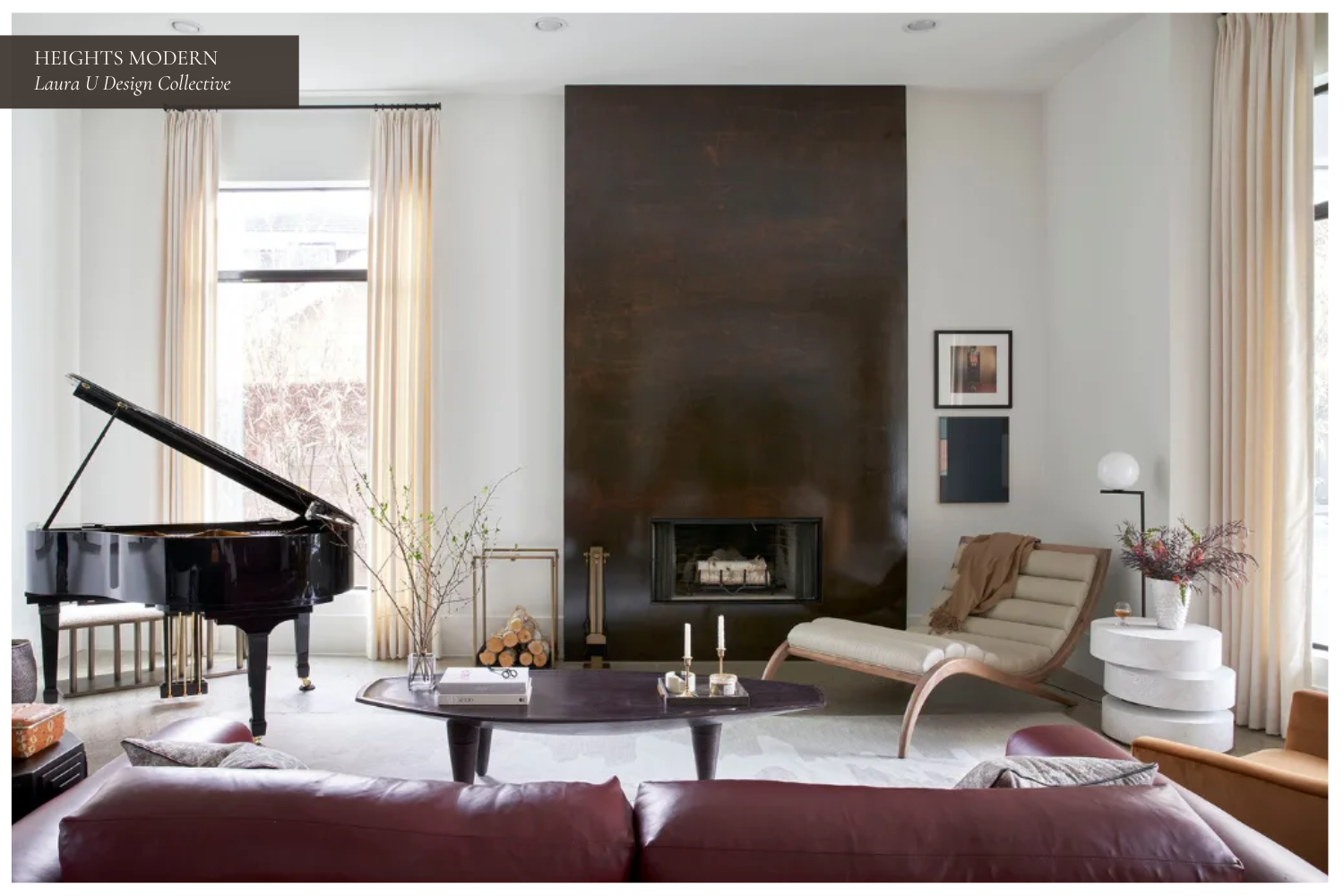
For transitional spaces, the MR Chaise has just the right balance: the steel frame keeps the design sharp, while its function softens the formality of more classical surroundings. It’s especially effective in rooms where you want to break up symmetry or introduce a more organic feel. You can see the influence this chaise had on other furniture, like the chaise pictured above in our Heights Modern project.
The LC4 Chaise Lounge by Le Corbusier, Pierre Jeanneret & Charlotte Perriand
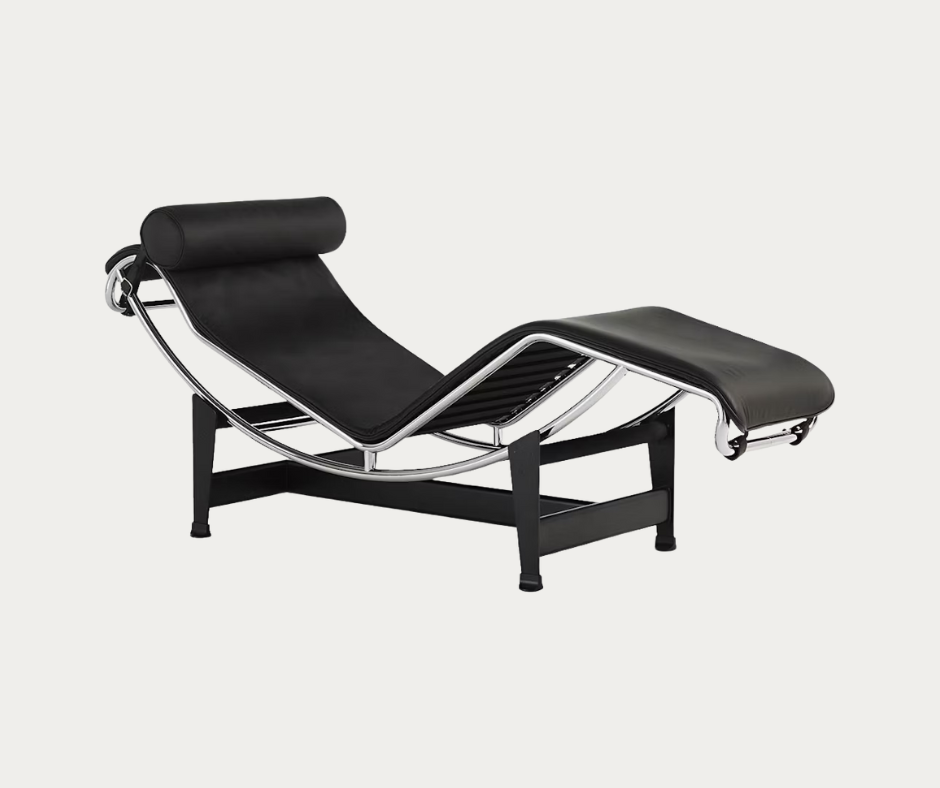
Nicknamed the “relaxing machine,” the LC4 was developed in 1928 by Le Corbusier, Pierre Jeanneret, and Charlotte Perriand. Its adjustable frame was engineered to follow the natural curves of the human body, allowing multiple lounging positions. They selected chrome-plated steel and leather for durability and modernism.
The LC4 is still one of the most comfortable lounge chairs ever designed. In transitional interiors, it is both functional seating and sculptural statement. Its presence suits wood-paneled rooms and high-ceilinged spaces just as well as minimalist apartments. Like many Bauhaus furniture pieces, it truly is timeless.
The Eileen Gray Side Table by Eileen Gray
Formally known as the E-1027 table, this design was created by Eileen Gray in 1927 for her seaside villa on the French Riviera. Its tubular steel base allows the circular glass top to be raised or lowered. Gray originally conceived it so her sister could eat breakfast in bed without making a mess.
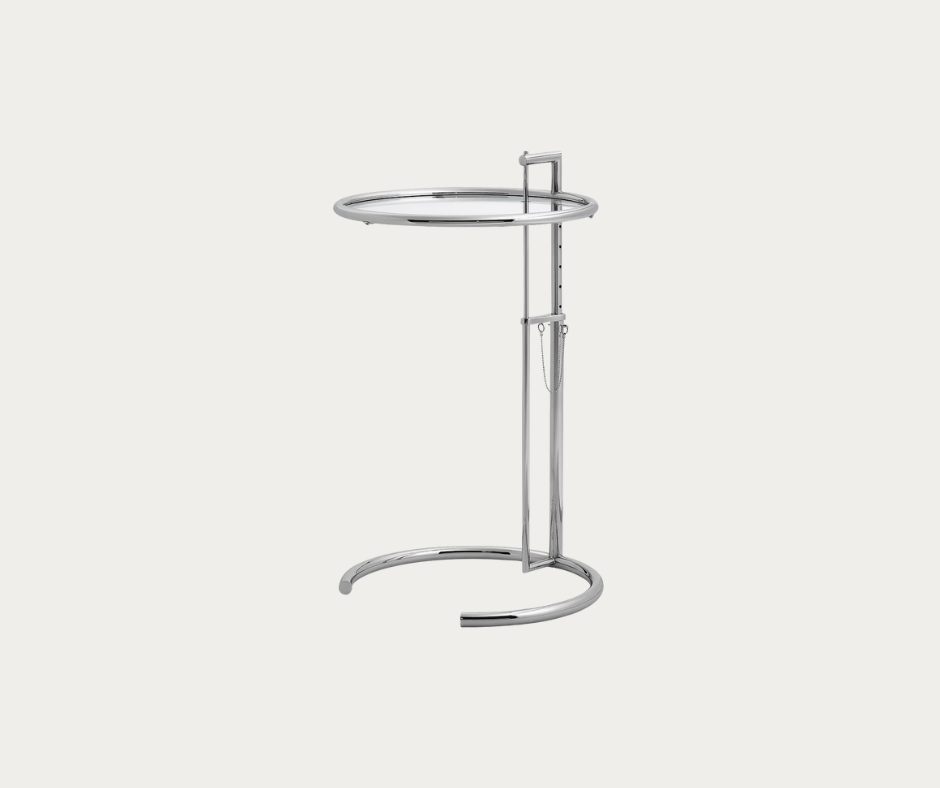
Lightweight, mobile, and supremely practical, the table embodies the same values celebrated by the Bauhaus, though Gray worked independently of the school. In transitional interiors, it slips neatly next to sofas and armchairs.
Why History Matters in Design
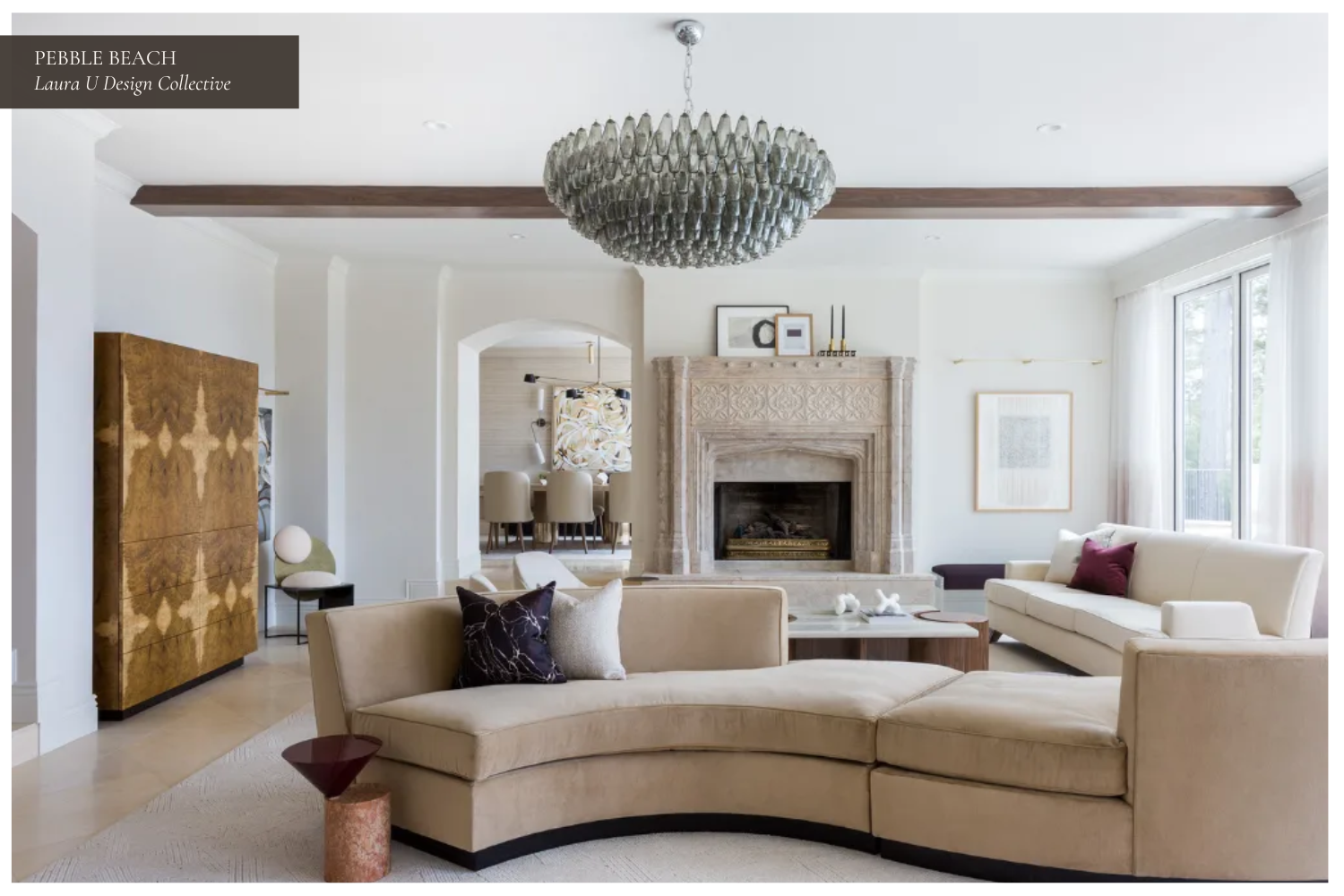
In any home, the details are what make an interior iconic and enduring. What makes these Bauhaus and Bauhaus-inspired pieces so timeless is not only their striking form but also the history behind them.
Each chair, table, or lamp represents a moment when designers rethought how we live with furniture: how it should look, how it should function, and how it should fit into daily life. Understanding that lineage is essential when placing these pieces in a modern home. The right designer knows when to let an icon shine on its own, when to pair it with something softer, and when a beloved heirloom might need a thoughtful update in upholstery or finish to keep it relevant for another generation. Even in contemporary work, like pieces by Lara Bohinc and other modern makers, you can see how a respect for Bauhaus geometry, materials, and spirit continues to inspire.
At Laura U Design Collective, we believe interiors should tell your story; they should respect the past while embracing the present. By blending historic pieces like these with contemporary comforts, we help clients create homes that are not only beautiful but deeply personal and timeless.



